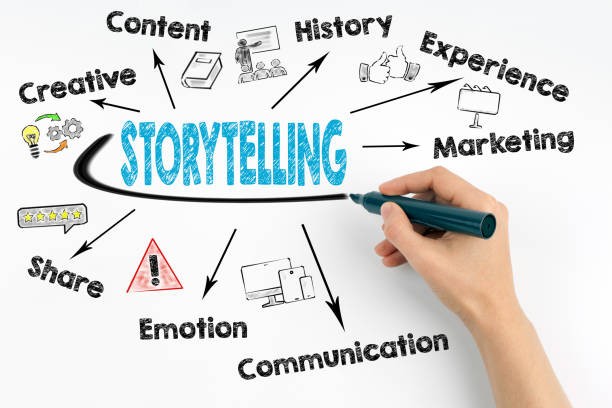Throughout history, people have relied on stories to share ideas and information. Stories have been used throughout history and cultures to fascinate and unite audiences. The importance of delivering compelling stories in marketing cannot be overstated. Take an example of online slots at https://icecasino.com/pt/caca-niqueis – the themes are compelling narrating different stories.
Weaving stories that strike a chord with their intended audience is a powerful way for businesses to engage with customers personally, increase brand loyalty, and boost revenue.
This article will discuss the importance of storytelling in marketing and its influence on customers and will use real-world examples to demonstrate the concept.
Storytelling and the Art of Experiment
The human brain is hardwired to enjoy a good story. Our brains release oxytocin, a hormone that promotes trust and empathy when we listen to an engaging story. Neural connection describes the link formed between a storyteller and their listeners. Making a customer feel good about their purchase by appealing to their emotions is a powerful tool in marketing.
Coca-Cola is a brand that has perfected the art of storytelling. Their memorable holiday commercials have become cultural icons because they evoke pleasant feelings in viewers by focusing on themes of family, friendship, and generosity.
Creating Brand Identity Through Storytelling
A compelling brand narrative may shape a company’s identity and ability to stand out. Brands may gain credibility and endearment from their customers by telling stories of their origins, beliefs, and goals.
Blake Mycoskie, the founder of TOMS Shoes, used the “One for One” program to develop a powerful brand story. By opening up about his life and the motivation behind the brand, TOMS Shoes has carved out a niche for itself as a socially conscious business. Customers may buy confidently, knowing that TOMS will provide another pair to a child in need for every pair of shoes they buy.
Engaging Customers through Customer Stories
In narrative advertising, customer anecdotes or endorsements are compelling. By providing social evidence and adding credibility in the eyes of potential purchasers, sharing genuine customer testimonials may increase sales.
Airbnb, for one, uses user-generated content to tell exciting tales about its customers. Airbnb’s “Belong Anywhere” campaign highlights the sense of belonging and shared experiences via sharing personal anecdotes of visitors who have experienced the thrill of interacting with people and immersing themselves in different cultures.
Leveraging Multi-Channel Storytelling
Advertisements are just one place where stories may be told effectively. Brands can convey their story and connect with more people using social media, blogs, and video content.
GoPro, a well-known action camera manufacturer, uses user-created material to portray exciting tales of exploration and peril. GoPro demonstrates its devices’ flexibility and curates compelling content by inviting people to share their thrilling moments.
Using Visuals to Evoke Emotion
Images and videos are extremely important in marketing campaigns that tell stories. They may move people to tears and stay with them long after they’ve finished watching.
Nike’s “Dream Crazier” ad campaign, for instance, displays strong, inspirational images of female athletes shattering stereotypes and doing their own thing. Nike presents an engaging story that strikes a chord with its intended audience, encouraging people to take risks and challenge themselves in the same way that these athletes have.
Using Storytelling to Introduce New Products
Storytelling is a powerful tool for introducing a new product or service to the market and building buzz around its release.
Apple, for one, has perfected the craft of product storytelling. Apple uses teases and carefully orchestrated launch events to drum up excitement for the debut of a new iPhone. They build consumer anticipation and desire by revealing the product’s characteristics and upgrades in a story.
Fostering Brand Loyalty through Continual Storytelling
Marketing via storytelling is not something you do once; rather, it should be a continuous approach. Brands may foster loyal followings by regularly publishing content that addresses consumers’ interests and values.
The “Real Beauty” campaign by Dove is an ongoing attempt to create stories encouraging people to think positively about themselves and their bodies. Dove’s mission to promote a good self-image resonates with its core audience since it regularly uses images of women who don’t fit conventional beauty standards.
Conclusion
Marketers’ ability to strike an emotional chord with their intended audience is greatly enhanced by storytelling. Brands may develop strong emotional connections and foster enduring brand loyalty by comprehending the science underlying storytelling, creating engaging brand tales, capitalizing on consumer experiences, employing multiple channels, and eliciting emotions via visuals.
If you want your company to connect with customers and stand out in a crowded market, incorporate storytelling into your marketing plan.


